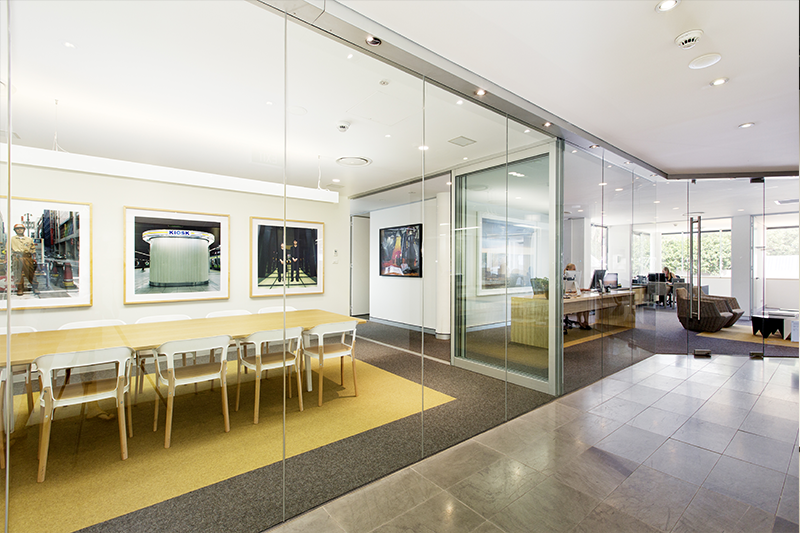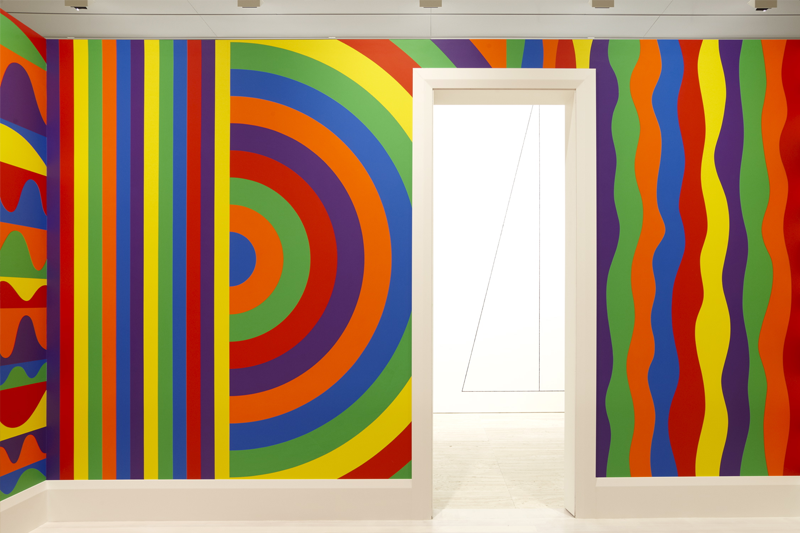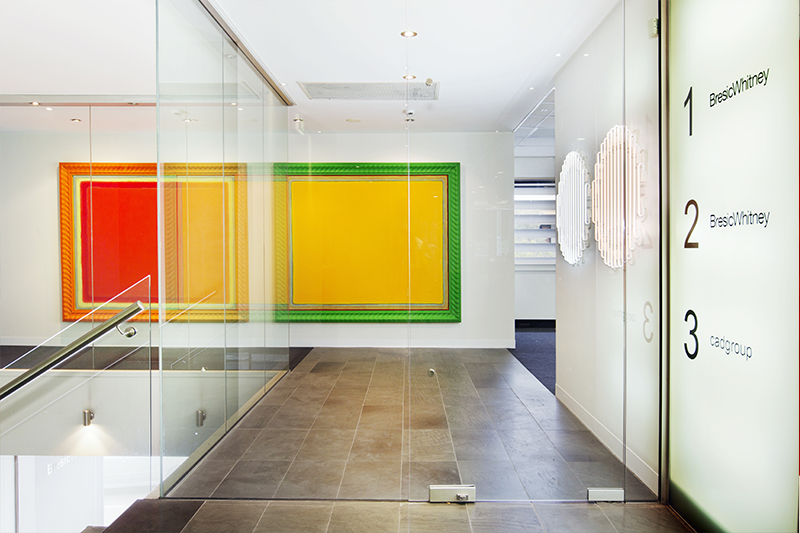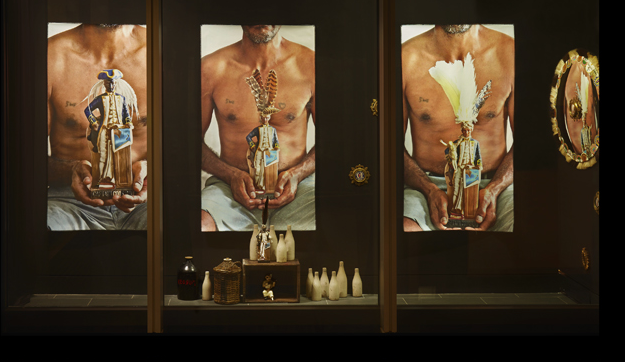By Belinda Aucott
As John Maynard Keynes once said: the avoidance of taxes is the only intellectual pursuit that still carries any reward. For this reason, we’re bringing you the good oil on tax relief, from deep within the art world. We’re prizing open the vault of knowledge to unlock methods with which you can use art to ease your tax bill.
This month we’ve compiled the best incentives from Australian-based art advisers, tax accountants and curators. For hard facts we’ve spoken to Michael Fox, a tax accountant from Melbourne who specialises in the arts. For more cultural insights we’ve consulted; Amanda Love an art adviser; Maria Poulos curator at Allens; Michelle Paterson Director of .M Contemporary and local collector and CEO of BresicWhitney, Shannan Whitney.
What we’ve found out is that there are two distinct routes you can take to use art for some tax relief. You can collect privately or as part of your business.
If you go it alone, you can use part of your discretionary income to slowly amass a fantastic art collection with a view to one day donating that collection (or part thereof) to an institution. Or, you can use your role as a business owner, to buy art which you can deduct as a legitimate business expense.
Some are accidental philanthropists, while others set out to leave a legacy. Whichever camp you fall in, read on to ensure your tax return looks a little bit prettier this year.

Karla Dicken, Allens Sydney: King Hit by Lifelike
Collect Museum Quality Art
The first tip is to collect museum quality art if you can.
Any fool can buy a piece of art. But buying work that is likely to line the walls of a public collection takes more skill. A bit of research now, can save you hundreds of thousands of dollars, if not millions of dollars later.
Tax Accountant Michael Fox says all collectors benefit from doing their homework.
“Initially it would be good if people just bought an artwork because they love it and they want to support the Australian art industry,” he says.
“You can buy very reasonably priced Australian work which will appreciate.” Still, like anything of value you choose to invest in, knowledge is power.
“The first distinction to make is whether you are going to collect privately with a view to donating later or whether you are going to collect on behalf of your business to foster a creative corporate culture,” he says.
The two methods produce different benefits so its best to know at the outset, which suits your purpose.
Gallery Founder and Director of .M Contemporary Michelle Paterson says buying museum quality art is much easier than people think. She recommends finding a good fine art gallery with whom you feel you can develop a rapport. Paterson, who has an eye for picking emerging artists with big futures, says her criteria for exhibiting artists, is two fold.
“Number one is I look for artists who have a strong technical foundation in drawing, painting and sculpting. Then I look for artists, who really want to change the world,” says Paterson.
Art Adviser Amanda Love agrees buying museum quality art is a sound investment.
“I just think collecting art is another way to relate to the world. It is another tool in your arsenal for seeing the world, for relating to it and for moving around in it.
“Contemporary Art, is a vertically integrated, worldwide pursuit nowadays.
“So why not? It is like wine. It’s something that if you know enough about it, it becomes increasingly more interesting and the more you know about the past, the more the present is relevant and vice versa, says Love.
According to the experts, if you buy museum quality art today, and invest in a top pedigree of artists, then just a little dibble-dabble in the market today, can be transformed into pennies and pounds later.

Image courtesy of the BresicWhitney Collection
Use Tony’s Tradies scheme
“The rules changed about two years ago regarding buying art for your business,” explains Michael Fox. “Today in Australia it is much easier to gain tax breaks for buying works of under $20,000 than it ever was before,” he says.
Fox who helps people with their tax every day says one of the big loopholes people can exploit, is the “Tony’s Tradies” – a Small Business raft of tax measures, which allows small businesses to claim their expenses up to $20,000.
“If you have an ABN, then under the small business act you can claim the entire sum of that purchase up to the tune of $20,000 each; A small business meaning turnover of less than $2 million dollars annually.
“This rule means you can buy as many individual art works as you like worth just under $20,000 each and claim them as a legitimate business expense. For example if you wanted you could buy five artworks for $19,990 each and claim a tax write-off of close to $100,000 by buying those 5 works.
“I don’t think the government really intended it to be a tax break for the arts industry. At the time it was introduced so that tradespeople could claim the expense of a utility vehicle.
“It is not that widely understood,” Fox says.

Sol LeWitt, Wall drawing #1091: arcs, circles and bands (room), 2013
Know your Budget
Michelle Paterson from .M Contemporary says that while some people might be intimidated by going to a gallery and asking prices, new collectors should never be scared to talk about the budget they have in mind for buying art.
“We can guide people to incredibly collectible museum quality work for under $20,000. We often work to very tight briefs for offices, homes and new collectors. Interior designers and architects for example will always come to us with a budget in mind, so we’re accustomed to taking clients through our stockroom to find the right thing,” Paterson says.

Image courtesy of the BresicWhitney Collection
Develop a corporate culture
Running a business in a cut throat industry? Wanting to attract great clients and retain incredible staff? Then buy art. Not only will you claim the expense of making your office look cool, but if you are in charge, at the top end of town, you can curate a serious corporate collection.
Once you amass a cool art collection you can tour the work or open it to the public.
“At the top end of town the ultimate, is when these companies appoint someone as a curator and actually put together a decent collection. Then those sorts of exhibitions can go touring around the country,” says Michael Fox. “Granted with the name of the company attached, but still, it’s a form or a good will and very clever marketing,” Fox says.
Overseas this is common practice. Here in Australia companies like Wesfarmers, BresicWhitney, Allens and SBS all have great corporate collections the public can visit.
Fox is also quick to add that collecting art for your company isn’t just about tax savings or marketing. “There have been several studies that show people who work in environments with nice artwork tend to be more productive,” he says.
Resident Curator at Allens Linklaters Maria Poulos can concur. Their collection was formed under the direction of Hugh Jamieson, a former partner at Allens, who left a legacy of 900 modern paintings. When he retired in 1995 he left behind a collection that has become central to the company’s vision and values, a collection that has continued to expand.
“The Collection represents an important part of Allens’ corporate identity and its connection to a much wider cultural world. In another sense, it’s a sign of good citizenship and creates a ‘civilised workplace’,” Poulos explains.
“Today, corporate collections are generally no longer seen simply as a way of decorating a company’s foyer, boardroom or offices. Instead, they are seen as a marketing tool that assists in defining a corporation’s brand or reputation.
“Many of the organisations that focus on collecting contemporary art are in competitive industries where it is necessary to project an image of being a forward thinking, dynamic and progressive market leader in order to attract the best staff and clients,” Poulos says.
Shannan Whitney who is the CEO and Founder of BresicWhitney has watched his corporate collection grow considerably since he purchased a Bill Henson for his office back in 2003.
“Art was introduced consciously quite early on. It was an important mechanism to connect customers with our brand within a physical space. It was also a nice connection piece for our staff,” Whitney says.
Today he points out, that in all four of his offices, art plays a strong, but silent role.
“Firstly it’s unexpected which is great. Secondly like all art is supposed to do, it prompts a response and reaction, which is valuable and finally I think it has been affective in helping people connect our brand with our vision,” he says.
Maria Poulos echoes this sentiment at Allens, sighting the impact on staff as ‘positive’.
“Lawyers often comment on the art as a great conversation starter with new clients – a handy way to break the ice. Even if someone remarks unfavourably, ‘How can you put up with that?’, art has stimulated discussion and a different way of looking at things,” she says.

Karla Dickens, King Hit by Lifelike Liquid 2016 Installation image Allens Sydney Project space
Use the Australian Government’s Cultural Gifts Program to solve a tax problem on the horizon
If you love art and you collect it, then there’s a high chance you have enjoyed it being present in your life. You have amassed great stories from you travels and your deals collecting it. You have lived with it and now you want to share it with others.
If this is the case, or if you can simply foresee some heavy tax bills in the next five years, then brush up on the conditions under which public institutions accept big bequests. (See point 1 about collecting Museum Quality Art.)
“You can only donate artworks if you bought them privately. You cannot donate artworks if you bought them for your business,” says Fox.
“If you speak to an institution’s curators and what you own fits into their general collection, then you would just need to have two accredited evaluations and that’s pretty much it. Once the valuation comes in and your donation is accepted, then you have five years to right-off the value of the artwork.
“You can then elect to a portion that figure in anyway you like, over the next five years. As long as you make the election of the percentage for each return before you put the return in, it will be valid,” Michael Fox says.
In Australia high profile people like Gene Sherman donated her collection of Japanese designer clothes to the Powerhouse museum a few years back, while John Kaldor also made an enormous bequest to the Art Gallery of NSW. In fact the Kaldor benefaction is the most significant and influential the Gallery has received in its more than 140-year history.
The John Kaldor Family Collection comprised of over 200 works, includes in-depth representation of Christo and Jeanne-Claude, Jeff Koons, Sol LeWitt, Robert Rauschenberg and Ugo Rondinone, among others. Minimalism is a cornerstone of the collection with an impressive list of works by Donald Judd, Carl Andre and Frank Stella. There is a strong performative element to his bequest, including works by Gilbert & George, Richard Long and Francis Alÿs and video art also that ranges from works by Nam June Paik and Bill Viola to a younger generation of Australians such as Shaun Gladwell.
You might not be rubbing shoulders with the world’s greatest artists right now, but if you aspire to collect, then art can be a gateway, not only to becoming a custodian of culture in this country but to being a law abiding tax payer who is trading incredible art for tax breaks!



